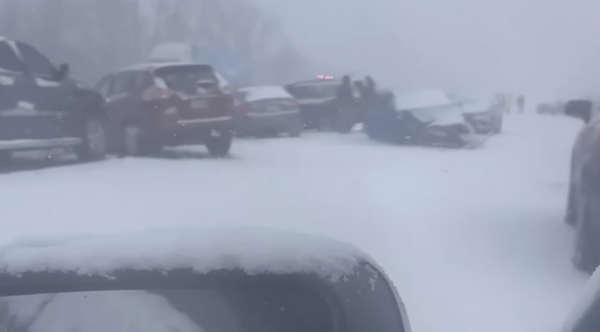
And so we again have a budget surplus. No longer will the Coalition be able to take up space in question time asking members of the government when the last time was that Labor delivered a surplus. And to be honest, when looking at the figures in the budget papers, you wonder if that was actually the entire point of the surplus in 2022-23.
Looking across the four years of the budget, we very much see the benefit of windfall taxation revenue (minus the amount of revenue that would have come from a real windfall profits tax).
Higher iron ore, gas and coal prices have delivered a bonanza of tax revenue, and a weird one-year drop in government spending ensured a surplus. But no one should care too much about it.
So what do you need to know?
Look at all the revenue
The budgets since 2020 have been pretty good for governments. After the desperation of the pandemic during which Treasury was rightly pessimistic about the future, more revenue than expected has arrived. As was the case last October, Jim Chalmers was able to stand at the dispatch box and announce a better-than-expected result.
Last October the government was predicting a $36.8bn deficit for 2022-23, or 1.5% of GDP. Now? A $4bn surplus (0.2% of GDP):
If the graph does not display, click here
So where did it come from? Well, not through thrift and tough decisions. The government would like to have you believe it did the hard yards and went through the budget finding “savings”. In reality, from this financial year out to 2026-27 the government is collecting an extra $152.6bn in revenue compared with what was expected in October’s budget.
And 85% of that comes from “parameter variations” – things turning out differently to what was predicted.
Mostly this involves changes in expectations of iron ore, gas and coal prices.
Treasury has assumed (rather conservatively, it should be said) that these prices will stay above long-term averages for longer than previously expected. When you consider that the Russian invasion of Ukraine shows little sign of abating, that is probably a fair assumption.

The big changes are in personal income and company tax revenue. Last October, the government predicted it would collect $127.3bn from companies in 2022-23 and $99.8bn in 2023-24. Now it expects $138.4bn this year and $128.7bn next year. That’s an extra $40bn, or an 18% increase, on what was expected.
Oh, and don’t be fooled into thinking the changes to the petroleum resource rent tax are delivering a big boom. The government expects to raise more money from the increases to tobacco excise than it does from the changes to the way gas is taxed.
Personal income tax revenue is also expected to be higher – mostly because employment growth is a bit better than expected, and wages, at least in the short term, are expected to grow slightly faster.
This year the government anticipates personal income tax being 6% higher than it did in October and about 4.8% higher over the four years of the budget.
On the spending side, a major reason for the budget surplus is an abnormally small amount of spending this year. In October the government anticipated spending to be worth 25.9% of GDP in 2022-23; now it anticipates just 24.8% of GDP. But not to worry, next year spending is back up to 26.5% of GDP.
If spending this year had been at the level of any of the next four years, there would have been no surplus.
The rocky waters ahead
One reason the budget is predicting a surplus only for 2022-23 is that while the boom of company taxes is set to last longer than anticipated, the economy is not expected to grow very strongly – just 1.75% this year and 1.5% next year. That is historically bad. Given the expected growth of population, it essentially suggests we will have a “per capita recession”.
The highlight is the very weak growth of household spending – up just 1.5% next year. That is a very low level and not one associated with a healthy economy.
The good news is the level of unemployment is not expected to rise too much. But the 4.5% peak is in line with the RBA’s estimates and does suggest an extra 150,000 people unemployed.

For an interactive version of this graph, click here
Is this inflationary?
The main criticism from some economists coming into the budget was that the cost-of-living package, which includes $14.6bn worth of measures such as up to $500 for energy relief and a $40 a fortnight increase in the jobseeker rate, could increase inflation.
The thinking behind this is if you give people more money, that increases demand and thus pushes up prices.
But no. Let us dispense with that thought now.
The jobseeker increase will decidedly not do this. The amount is so small it will take people on the benefit from being about 44% below the poverty line to about 41% below. In aggregate terms it will add very little to household disposable income, which is worth about $380bn each quarter.

The increase to jobseeker, youth allowance and the disability support pension, the changes to single parenting payments and the increase in rental assistance will cost about $2.35bn in a year or effectively be putting an extra $587m into households in one quarter.
Given household income usually grows by about $3.9bn a quarter, this increase is little more than a rounding error.
Overall, the best way to gauge the impact on inflation is to look at the level of public demand growth. The budget predicts public sector demand next year will grow by just 1.75% – the slowest since 2014-15.
This is in no way an expansionary budget.
So about those wages
Almost every budget for the past decade has predicted stronger wage growth that has failed to materialise. This time the figures are only marginally different from what was predicted last October. Mostly it now predicts wages growth will be better in the next 12 months but slower thereafter.

That is pretty conservative and a welcome change from some of the absurd predictions of the past, which had unemployment rising and wage growth magically going up as well.
But given the level of inflation predicted, it means real wages will continue to take a hit until next year.
The budget does predict that real wages will start to rise in 2023-24, but it will take a long time to undo the damage of the past three years. The budget figures suggest that by June 2027 wages will still be 2.5% below where they were in June 2020 and in real terms will only be at the level they were in 2014.
For an interactive version of this graph, click here
What to make of it all?
First, please dispense with caring about the budget surplus. The $4bn is so small it would have disappeared by moving around some spending measures or with a small change in mineral prices.
That we are not projected to have a surplus again any time soon shows that this is a one-off rather than something that really means anything.
Were the government fully committed to a budget surplus it would attack the stage-three tax cuts. In their first year of operation in 2024-25 they are projected to cost $20bn. The projected deficit for that year is $13.9bn.
And with at least 18 months of very weak economic growth, I suspect framing next year’s budget will be much tougher than this year’s.







